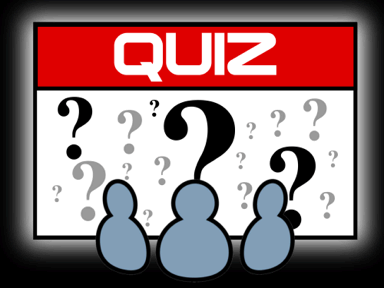
1.5 Gas Test Video
1.5 Gas Test
| Gas | Example of Preparation | Test |
| Oxygen | Decomposition of hydrogen peroxide H2O2 -----> H2O + ½O2(g) Thermal decomposition of some metallic oxides 2PbO -----> 2Pb + O2(g) | Ignites a glowing splint since oxygen supports combustion |
| Hydrogen | acid + metal -----> salt + hydrogen gas 2HCl + Zn -----> ZnCl2 + H2(g) active metal + water -----> hydroxide + hydrogen gas Ca(s)+ 2H2O--->Ca(OH)2+ H2(g) | "Pop Test" : a lit taper will produce an audible "pop" when placed in hydrogen gas |
| Carbon dioxide | acid + carbonate -----> salt + water + carbon dioxide 2HCl+CaCO3-->CaCl2+H2O+CO2(g) Thermal decomposition of some carbonates CuCO3 -----> CuO + CO2(g) | When CO2(g) is bubbled through colourless limewater (Ca(OH)2(aq))the limewater turns milky due to the formation of a calcium carbonate (CaCO3(s)) precipitate. When CO2(g) is bubbled through Ba(OH)2(aq) a white precipitate of BaCO3 forms. |
| Nitrogen dioxide | Thermal decomposition of some nitrates 2Ni(NO3)2--->2NiO + O2+ 4NO2(g) 2Pb(NO3)2--->2PbO + O2+4NO2(g) Less active metals + nitric acid -----> nitrate + water + nitrogen dioxide Cu + 4HNO3 | Nitrogen dioxide is a red-brown gas which is soluble in water and has a pungent odour. |
| Sulfur dioxide | Combustion of sulfur S(s) + O2 -----> SO2(g) Sulfites + acid -----> water + sulfur dioxide SO32- + 2H+ -----> H2 + SO2(g) Hot concentrated sulfuric acid + copper 3H2SO4 + Cu(s) | SO2(g) is bubbled through hydrogen peroxide solution (H2O2) to produce sulfuric acid (H2SO4). The addition of barium chloride solution (BaCl2(aq)) to this solution results in a precipitate of barium sulfate (BaSO4(s)). SO2(g) passed through a concentrated, acidified solution of potassium dichromate (K2Cr2O7) causes the dichromate solution to change colour from orange to green due to the formation of chromium (III) ions (Cr3+). |
| Hydrogen sulfide | sulfide + acid -----> salt + hydrogen sulfide FeS(s) + 2HCl ---> FeCl2 + H2S(g) | H2S is often referred to as "rotten egg gas" as it smells just like rotten eggs! H2S(g) is passed through a solution of zinc chloride (ZnCl2) and a white precipitate of zinc sulfide forms (ZnS(s)). Pass H2S(g) over a damp filter paper impregnated with lead (II) nitrate (Pb(NO3)2), the paper turns black as lead (II) sulfide (PbS(s)) forms. |
| Chlorine | MnO2(s) + 2Cl- + 4H+ Electrolysis of molten sodium chloride (NaCl) 2NaCl -----> 2Na(Hg) + Cl2(g) | Cl2(g) is a pale yellow-green gas which bleaches coloured materials and has a characteristic choking odour. |
1.4 Qualitative Analysis
- Physical properties (colour and solubility)
- Gas test
- Action of heat
- Cation Test
- Anion Test
- Confirmatory Test
1.3 Preparation of Insoluble Salt
Precipitation Process aka Double Decomposition Method
Here is the note for u beloved students to make u more understand in this chapter.
Enjoy!!
1.2 Preparation of Soluble Salt
1. Soluble Salt
1.1 Acid + Alkali --> SALT + Water
1.2 Acid + Metal --> SALT + Hydrogen
1.3 Acid + Metal Oxide --> SALT + Water
1.4 Acid + Metal Catbonate --> SALT + Water + Carbon dioxide
Below is the complete notes about preparation of soluble salt.Hope it will help u students!
1.1 What is Salt ?
Salt is an ionic compound formed when hydrogen ion in acid is replaced bt metal ion or ammonium ion.
Example :
HCl + NaOH --> NaCl + H2O
sodium ion replace hydrogen ion to formed sodium chloride salt.
Here some note about 2 class of salt, Soluble and Insoluble salt.








